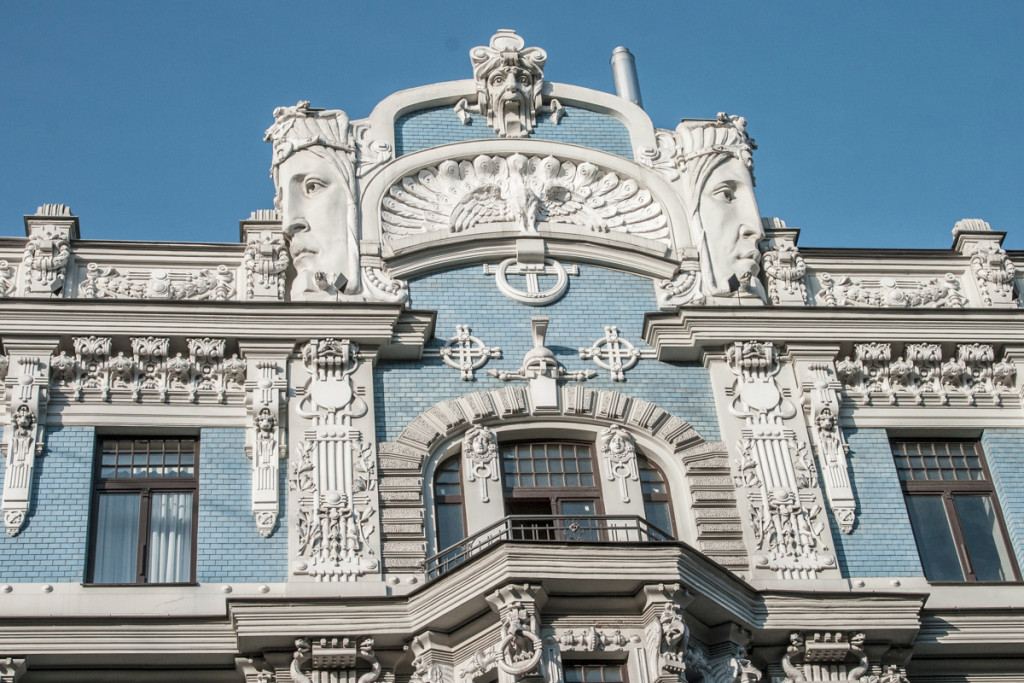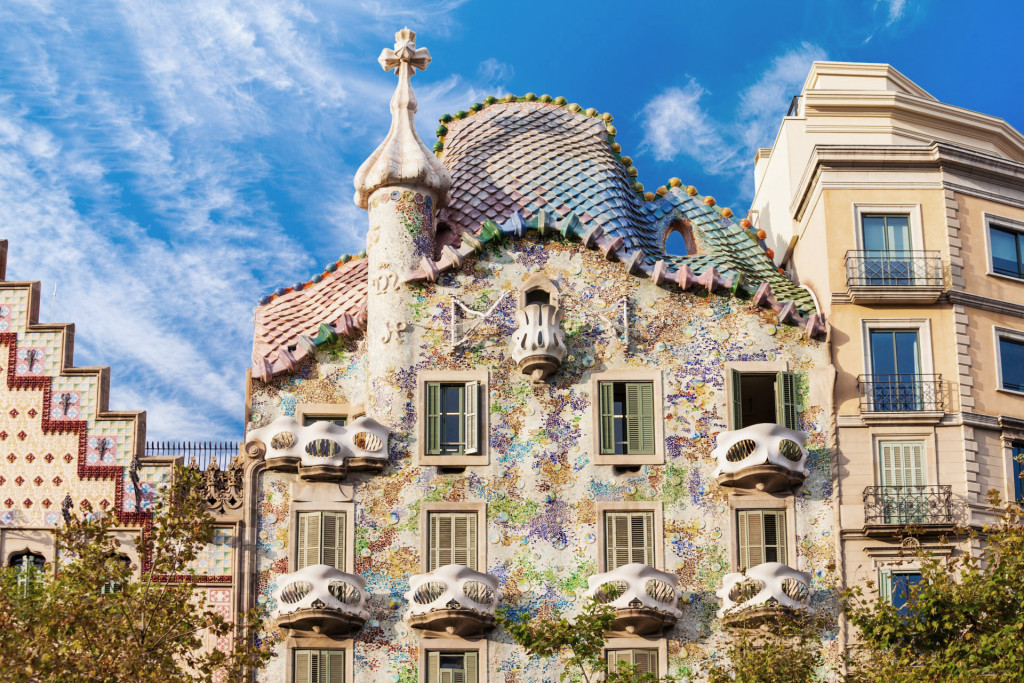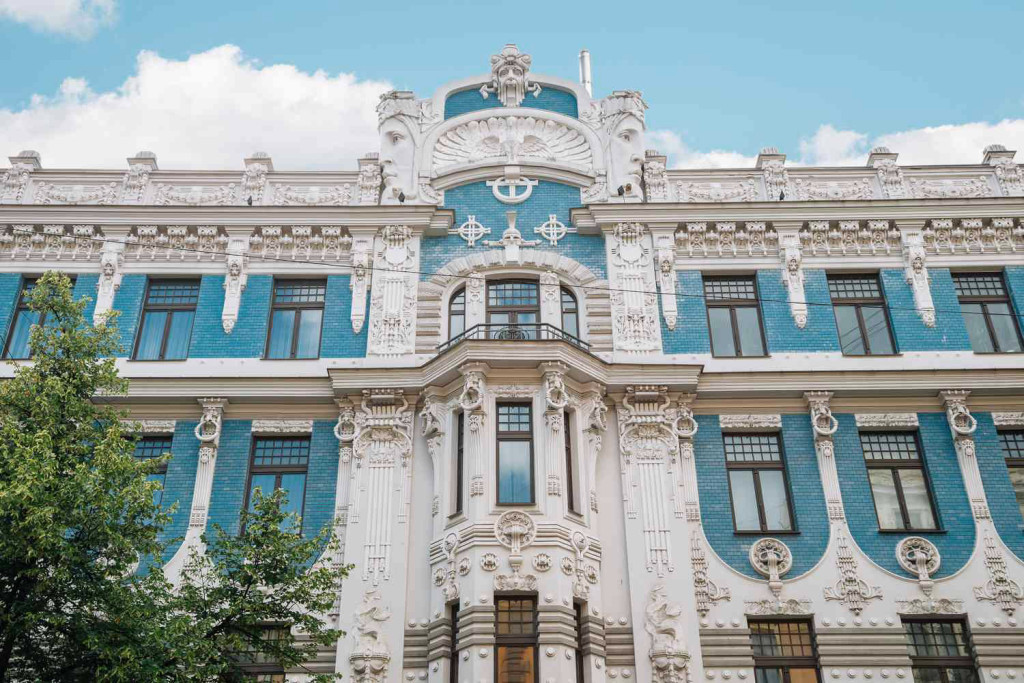Introduction – Art Nouveau Buildings
Unveiling the Art Nouveau Buildings
Workmanship Nouveau, otherwise called Jugendstil or Severance, was a worldwide development in the improving expressions and design that thrived between the late nineteenth and mid twentieth hundreds of years. It was described by its utilization of natural structures, twisted lines, and flower themes, as well as its dismissal of conventional compositional styles.
The Significance of Art Nouveau Buildings
Workmanship Nouveau structures are critical for their one of a kind stylish and inventive utilization of materials. They address a break from the verifiable and diverse styles that ruled engineering in the late nineteenth hundred years. Craftsmanship Nouveau engineers embraced new innovations and materials, like iron, glass, and cement, to make structures that were both exquisite and practical.

Historical Roots – Art Nouveau Buildings
Birth of Art Nouveau
The Workmanship Nouveau development arose in Belgium in the mid 1890s, drove by planners like Victor Horta and Paul Hankar. It immediately spread to different pieces of Europe, including France, Germany, Austria, and Spain. Workmanship Nouveau likewise acquired prominence in the US and different areas of the planet.
Influences on the Movement
Art Nouveau was influenced by a variety of sources, including:
- Nature: Art Nouveau architects were inspired by the organic forms and sinuous lines found in nature. They used these elements to create buildings that were both beautiful and functional.
- Japanese art: Art Nouveau artists were also drawn to the simplicity and elegance of Japanese art. They consolidated Japanese themes, like cherry blooms and cranes, into their plans.
- Symbolism: Numerous Workmanship Nouveau specialists were likewise engaged with the Symbolist development, which stressed the utilization of images to convey profound implications. Art Nouveau buildings often feature symbolic elements, such as peacocks, sunflowers, and irises.
Distinct Characteristics
Art Nouveau buildings are characterized by a number of distinct features, including:
Organic Forms and Curves
Art Nouveau architects rejected the rigid lines and geometric forms of traditional architecture. Instead, they embraced organic forms and sinuous curves, which they saw as more natural and harmonious.
Ornate Floral Motifs
Craftsmanship Nouveau structures are frequently decorated with resplendent flower themes. These themes are enlivened by various blossoms, including lilies, roses, and orchids. They are frequently used to brighten the veneers, insides, and goods of Workmanship Nouveau structures.
Asymmetrical Designs
Art Nouveau architects also favored asymmetrical designs over the traditional symmetrical balance. This asymmetry creates a sense of dynamism and movement in Art Nouveau buildings.
Stylized Facades
Craftsmanship Nouveau exteriors are frequently exceptionally adapted and include various brightening components, like created iron overhangs, stained glass windows, and elaborate tilework.
Pioneering Architects – Art Nouveau Buildings
Various spearheading planners assisted with molding the Craftsmanship Nouveau development. Probably the most striking include:
Victor Horta – A Belgian Visionary
Victor Horta was one of the initial architects of Craftsmanship Nouveau design. His structures in Brussels, for example, the Hôtel Decoration and the Maison du Peuple, are viewed as magnum opuses of the style. Horta’s work is described by its utilization of natural structures, crooked lines, and lavish ironwork.
Hector Guimard’s Parisian Legacy
Hector Guimard was a French architect who is best known for his whimsical designs for the entrances to the Paris Métro system. Guimard’s work is characterized by its use of flowing lines, floral motifs, and stylized ironwork.
The Whimsical World of Antoni Gaudí
Antoni Gaudí was a Catalan modeler who is known for his one of a kind and fantastical plans. His structures in Barcelona, like the Sagrada Família and Casa Batlló, are viewed as among the most notorious instances of Workmanship Nouveau design. Gaudí’s work is portrayed by its utilization of natural structures, mathematical shapes, and bright mosaics.
Global Spread – Art Nouveau Buildings
Workmanship Nouveau spread quickly from its starting points in Belgium to different pieces of Europe and the world. Probably the most striking instances of Craftsmanship Nouveau design beyond Europe include:
Art Nouveau Beyond Europe
- Joined States: The Larkin Working in Bison, New York, planned by Honest Lloyd Wright, is a great representation of Workmanship Nouveau design in the US.
- South America: The Casa Milá, otherwise called La Pedrera, in Barcelona, Spain, planned by Antoni Gaudí, is a magnum opus of Craftsmanship Nouveau design.
Influence on Architecture Worldwide
Workmanship Nouveau likewise affected engineering in different regions of the planet, including:
- Australia: The Scottish House in Melbourne, Australia, planned by William Pitt, is a fine illustration of Workmanship Nouveau engineering in Australia.
- India: The Gateway of India in Mumbai, India, designed by George Wittet, is a blend of Art Nouveau and Islamic architecture.
- Japan: The Iwasaki Residence in Tokyo, Japan, designed by Josiah Conder, is an example of Art Nouveau architecture in Japan.
Architectural Elements – Art Nouveau Buildings
Art Nouveau buildings are often characterized by their use of distinctive architectural elements, such as:
Exquisite Ironwork
Art Nouveau architects were masters of ironwork. They used iron to create intricate and elegant balconies, railings, and gates.
Stained Glass Marvels
Art Nouveau stained glass windows are often characterized by their use of vibrant colors, floral motifs, and geometric shapes.
Intricate Woodwork
Art Nouveau woodwork is often characterized by its use of flowing lines, organic forms, and floral motifs.
Elaborate Tilework
Art Nouveau tilework is often characterized by its use of geometric patterns, floral motifs, and stylized figures.
Iconic Art Nouveau Buildings
Some of the most iconic Art Nouveau buildings in the world include:
Hôtel Tassel – Brussels, Belgium
The Hôtel Decoration, planned by Victor Horta, is viewed as quite possibly the earliest and most significant instances of Craftsmanship Nouveau engineering. The structure is portrayed by its utilization of natural structures, twisted lines, and fancy ironwork.
Casa Batlló – Barcelona, Spain
The Casa Batlló, planned by Antoni Gaudí, is a magnum opus of Workmanship Nouveau engineering. The structure is portrayed by its unusual exterior, which highlights vivid mosaics, natural structures, and fashioned iron galleries.
Hotel Solvay – Brussels, Belgium
The Inn Solvay, planned by Victor Horta, is one more notorious illustration of Craftsmanship Nouveau design. The structure is described by its rich exterior, which highlights fashioned iron galleries, stained glass windows, and elaborate tilework.
The Majestic Casa Lleó Morera – Barcelona, Spain
The Casa Lleó Morera, planned by Lluís Domènech I Montaner, is a heavenly illustration of Workmanship Nouveau design. The structure is portrayed by its lavishly enhanced exterior, which highlights bright mosaics, natural structures, and created iron overhangs.
The Whimsical Casa Vicens – Barcelona, Spain
The Casa Vicens, planned by Antoni Gaudí, is an early illustration of his interesting and fantastical style. The structure is portrayed by its brilliant exterior, which highlights flower themes, mathematical shapes, and earthenware tiles.

Art Nouveau in Modern Design – Art Nouveau Buildings
Art Nouveau’s influence can still be seen in contemporary design. Elements such as organic forms, floral motifs, and stained glass continue to be used by designers today.
Contemporary Influences
Workmanship Nouveau has impacted a large number of contemporary creators, including style fashioners, furniture originators, and inside planners. For instance, the style creator Christian Dior was propelled by Workmanship Nouveau themes in his plans.
Revival of Art Nouveau Elements
Workmanship Nouveau components have additionally been resuscitated as of late in engineering and plan. For instance, the planner Straight to the point Gehry involved Workmanship Nouveau themes in the plan of the Guggenheim Exhibition hall Bilbao in Spain.
Another example of the revival of Art Nouveau elements is the work of the interior designer Kelly Wearstler. Wearstler’s designs often feature organic forms, floral motifs, and rich colors, which are all inspired by Art Nouveau.
Art Nouveau and Urban Landscapes
Craftsmanship Nouveau fundamentally affects the metropolitan scenes of numerous urban communities all over the planet. Craftsmanship Nouveau structures can be found in urban communities like Brussels, Barcelona, Paris, and Vienna. These structures add a dash of tastefulness and caprice to the cityscapes in which they are found.
Impact on Cityscapes
Workmanship Nouveau structures frequently stand apart from their environmental factors because of their novel and eye-getting plans. For instance, the Casa Batlló in Barcelona is one of the most famous vacation destinations in the city, because of its eccentric exterior and beautiful mosaics.
City Tours and Art Nouveau
Numerous urban communities offer voyages through their Specialty Nouveau structures. These visits are an extraordinary method for becoming familiar with the historical backdrop of Craftsmanship Nouveau and to see probably the most notorious instances of the style.
Summary
A Glimpse into Art Nouveau’s Elegance
Craftsmanship Nouveau was a remarkable and imaginative development in the beautifying expressions and engineering. Craftsmanship Nouveau structures are portrayed by their utilization of natural structures, twisted lines, and flower themes. Workmanship Nouveau lastingly affects engineering and plan, and its impact should be visible in contemporary works all over the planet.
The Enduring Legacy
Workmanship Nouveau’s inheritance is persevering. Craftsmanship Nouveau structures keep on being respected and valued by individuals everywhere. Craftsmanship Nouveau’s impact can likewise be found in contemporary plan, from style to furniture to inside plan.
FAQs
What makes a building Art Nouveau?
Art Nouveau buildings are characterized by a number of distinct features, including:
- Organic forms and curves: Art Nouveau architects rejected the rigid lines and geometric forms of traditional architecture. Instead, they embraced organic forms and sinuous curves, which they saw as more natural and harmonious.
- Luxurious flower motifs: Craftsmanship Nouveau structures are frequently decorated with resplendent flower themes. These themes are enlivened by various blossoms, including lilies, roses, and orchids. They are frequently used to adorn the veneers, insides, and goods of Craftsmanship Nouveau structures
- Asymmetrical designs: Art Nouveau architects also favored asymmetrical designs over the traditional symmetrical balance. This lopsidedness makes a feeling of dynamism and development in Craftsmanship Nouveau structures.
- Adapted facades: Craftsmanship Nouveau exteriors are frequently exceptionally adapted and include various brightening components, like created iron overhangs, stained glass windows, and elaborate tilework.
How do you identify Art Nouveau architecture?
Here are some tips on how to identify Art Nouveau architecture:
- Look for organic forms and curves. Art Nouveau buildings often have flowing lines and rounded shapes.
- Look for ornate floral motifs. Art Nouveau buildings are often decorated with flowers, leaves, and other natural elements.
- Look for asymmetrical designs. Art Nouveau buildings are often not perfectly symmetrical.
- Look for stylized facades. Art Nouveau facades are often highly decorated with wrought iron, stained glass, and tilework.
Why is Art Nouveau architecture important?
Craftsmanship Nouveau design is significant for various reasons. To start with, it was a novel and creative development that split away from the customary engineering styles of the late nineteenth hundred years. Second, Workmanship Nouveau structures are frequently of high stylish quality and element perfect craftsmanship. Third, Workmanship Nouveau has affected engineering and plan, and its components should be visible in contemporary works all over the planet.

